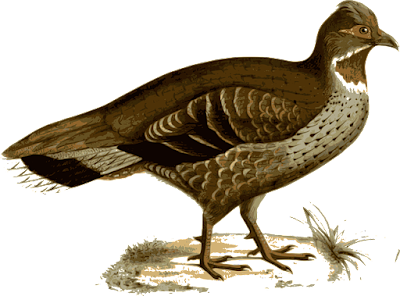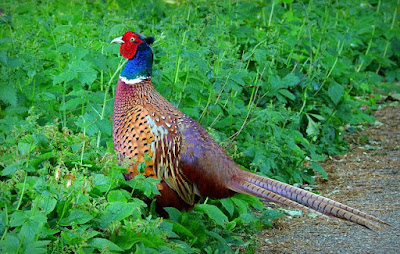Pheasant, a bird famous for its vibrant plumage and elegant demeanor, is a symbol of grace and beauty in the bird world. Belonging to the Phasianidae family, these fascinating birds are found in different parts of the world, mesmerizing onlookers with their elaborate displays and distinctive features. In this article, we will delve deeper into the fascinating world of pheasants, exploring their characteristics, habitat, behavior and their importance to both natural ecosystems and human culture.
Physical Characteristics:
Pheasants are characterized by their bright and varied feathers, which serve both functional and decorative purposes. Males, or cocks, are often more brightly colored than their female counterparts, or hens. The range of colors and intricate patterns on their feathers not only contribute to their visual appeal, but also play an important role in courtship displays and territorial communication.
The long, broad tail feathers of male pheasants, known as a train, are a distinctive feature that enhances their regal appearance. These trains are prominently displayed during courtship rituals, emphasizing the bird's vitality and genetic fitness for potential mates.
Habitat and distribution:
Pheasants are incredibly adaptable birds, and their habitats can range from dense forests and grasslands to agricultural fields. They are native to Asia, with China being a particularly rich source of various pheasant species. However, due to introduction and successful adaptation efforts, pheasants can now be found in many parts of the world, including North America, Europe, and parts of Africa.
Behavior and Social Structure:
Pheasants are generally ground-dwelling birds, searching for food such as seeds, insects and small invertebrates. They are known for their distinctive calls, which vary between species and are used for communication within their social groups. During the breeding season, males perform elaborate courtship displays, displaying their vibrant plumage and intricate dances to attract potential mates.
Social structures vary between species, with some pheasants forming loose flocks, especially during the non-breeding season, while others are more solitary in nature. The complex dynamics of their social structures contribute to their overall flexibility and adaptability to diverse environments.
Ecological Importance:
Pheasants play an important role in maintaining ecological balance by controlling insect populations and aiding seed dispersal. As omnivores, they contribute to the natural control of insect populations, helping to keep ecosystems under control. Additionally, their presence in different habitats reflects the overall health of the ecosystem, making them important indicators of environmental well-being.
Cultural importance:
Pheasants have also left an indelible mark on human culture. These birds have been featured in folklore, literature, and art throughout history. In many cultures, they are associated with qualities such as beauty, nobility, and flexibility. Additionally, pheasants are a popular game bird, making them a subject of interest for hunters and wildlife lovers alike.
The pheasant, with its magnificent plumage and adorable behavior, stands as a testament to the diversity and wonder of the natural world. From their vibrant displays in the wild to their cultural importance in human history, these birds continue to capture the imagination of those who encounter them. Studying and appreciating the intricacies of pheasants not only expands our understanding of bird life, but also deepens our connection with the rich tapestry of the natural world.
Here are some interesting facts about pheasants:
- species diversity: Pheasants belong to the Phasianidae family, which includes many species and subspecies. Common species include the ring-necked pheasant, golden pheasant, and Lady Amherst pheasant.
- Colorful Plumage: Male pheasants, known as cockerels, are renowned for their vibrant and varied plumage. Colors can range from iridescent blues and greens to striking reds and golds. This colorful display is often used during courtship rituals to attract females.
- Distinctive Features: Male pheasants usually have long, ornate tails, known as trains, which are prominently displayed during courtship displays. These tail feathers contribute to the bird's majestic appearance.
- Global distribution: Pheasants are native to Asia, particularly China, but have been introduced to various parts of the world for hunting and ornamental purposes. They can now be found in areas of North America, Europe, and Africa.
- Compatibility: Pheasants are highly adaptable birds, able to thrive in a variety of habitats, including forests, grasslands, and agricultural fields. Their ability to adapt to different environments has contributed to their wide distribution.
- Omnivorous Diet: Pheasants are omnivores, eating a diverse diet that includes seeds, insects, small invertebrates and even small vertebrates. Their diverse diet contributes to their role in controlling insect populations and aiding seed dispersal.
- Elaborate Courtship Display: During the breeding season, male pheasants engage in complex courtship displays. These displays include displaying their colorful feathers, dancing and singing to attract potential mates.
- social structure: Social structures can vary between pheasant species. While some form loose herds, especially during the non-breeding season, others are more solitary. The mobility of their social structures contributes to their adaptability to different environments.
- Game Bird Status: Pheasants are popular hunting birds and are often chased by hunters. They are known for their elusive behavior, making them a challenging target for sportsmen and women.
- Cultural Symbolism: Pheasants hold cultural significance in various societies. She has been depicted in folklore, literature, and art, symbolizing qualities such as beauty, nobility, and resilience. Their presence in cultural expressions reflects the enduring fascination with these amazing birds.




Comments
Post a Comment